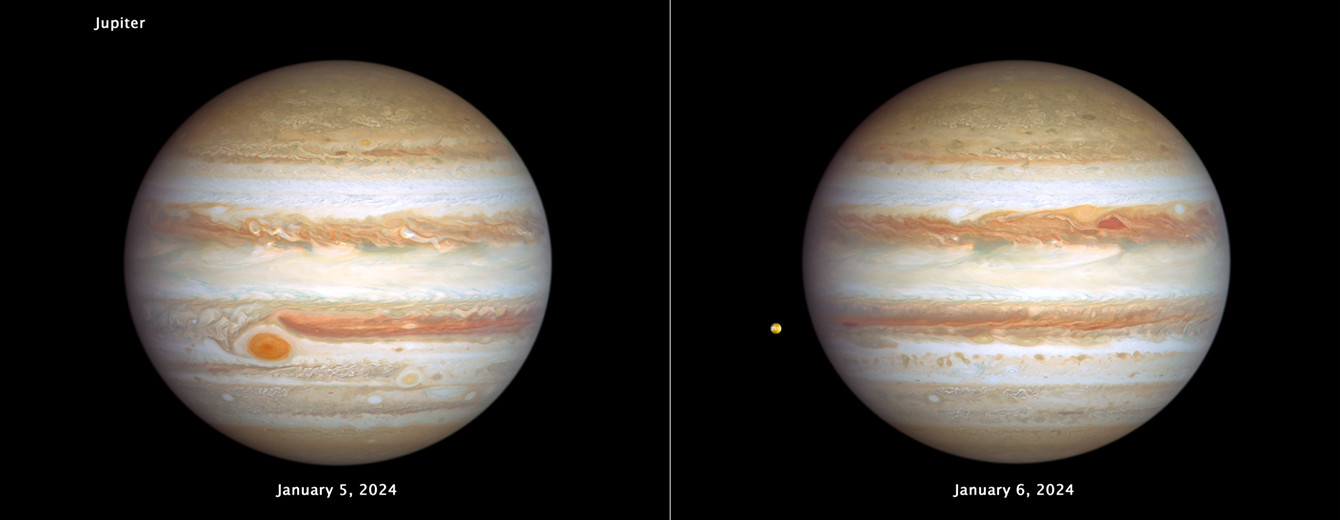Fraser Cain on Nostr: The Hubble Space Telescope focuses on each giant planet when they're the largest and ...
The Hubble Space Telescope focuses on each giant planet when they're the largest and brightest in the sky. Jupiter had its photos taken on January 5-6th, 2024, showing off both sides of the planet. In the left image, you can see the Great Red Spot and a smaller spot to its lower right known as Red Spot Jr. The two spots pass each other every two years on average. In the right image, several smaller storms are rotating in alternating atmospheric bands.
https://hubblesite.org/contents/news-releases/2024/news-2024-009 
Published at
2024-03-14 19:22:03Event JSON
{
"id": "9d82e33425c17de848f34ab53903f960685eaa5e5790b7a87ee3bfa09489fae1",
"pubkey": "ac844e7de79ee4ba0cc0999efe9afb25cc9bd99ba0b5957cf0fd406fcabaf11a",
"created_at": 1710444123,
"kind": 1,
"tags": [
[
"proxy",
"https://m.universetoday.com/users/fraser/statuses/112095666045181580",
"activitypub"
]
],
"content": "The Hubble Space Telescope focuses on each giant planet when they're the largest and brightest in the sky. Jupiter had its photos taken on January 5-6th, 2024, showing off both sides of the planet. In the left image, you can see the Great Red Spot and a smaller spot to its lower right known as Red Spot Jr. The two spots pass each other every two years on average. In the right image, several smaller storms are rotating in alternating atmospheric bands.\n\nhttps://hubblesite.org/contents/news-releases/2024/news-2024-009\n\nhttps://m.universetoday.com/system/media_attachments/files/112/095/666/037/668/914/original/bdc86ed49381e296.jpg",
"sig": "4639638af5a88e58928430fb4ba9cf4cec147eceb6ada65b15b153067d6496ac6352e71cf21dccd826ad6c51086ff74b4110b695d3d6fb2f8b01e028de1ec0dd"
}

